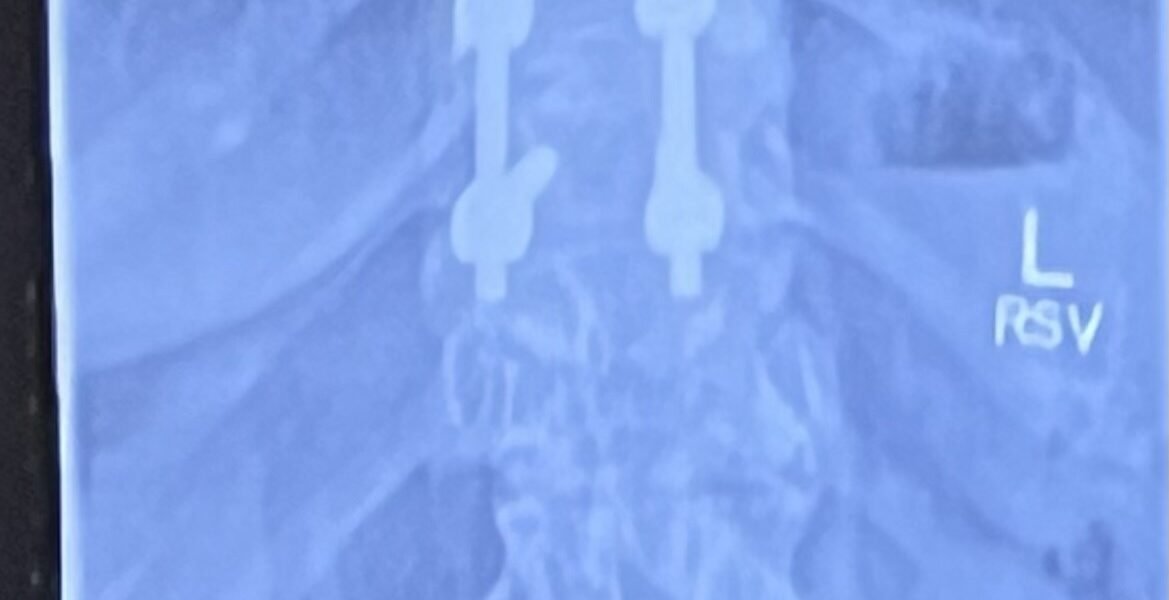The moment I knew something was wrong was when I had an appointment for my Passport at the post office. My right leg was going numb and it felt like I was dragging it behind me. I inquired with a doctor right away and he told me that it was just a pinched nerve. He prescribed me a muscle relaxer and I had the bruja in my tia, coming to massage my leg. Nothing helped. I finally went to the emergency room after falling at work. I was talking with my staff and outta nowhere, I was on the floor. They diagnosed me with a potassium and magnesium deficiency and blamed that for my paralysis. By this time I was using a walker. It was my little hot-rod. I started secluding and isolating myself from everybody. I didn’t want to do my hair or makeup. Things I loved to do daily. It was the whole basis of Nights with Katie. I finally had surgery and was able to recover. I was able to go back to my day job as a Behavioral Therapist for my local school district and help children with special needs. I was able to write again. Do makeup again. Hair. travel again.
Here I am again, going in for another surgery but this time with less paralysis but with three trouble spots instead of 1.I have my amazing partner Monica, my loving family and my daughters who give me the motivation to keep healing! However with Nights with Katie being one of my happiest outlets, I will continue to keep writing… for my sanity and your entertainment.
Understanding Spinal Stenosis, Laminectomy, and Spine Fusion: A Comprehensive Guide
Introduction: Spinal stenosis, a condition characterized by the narrowing of the spinal canal, can cause significant discomfort and limitations in mobility. However, advancements in medical technology have led to effective treatment options such as laminectomy and spine fusion. In this blog, we’ll delve into what spinal stenosis is, how laminectomy and spine fusion procedures work, and what patients can expect from each treatment.
Understanding Spinal Stenosis: Spinal stenosis occurs when the spaces within the spine narrow, putting pressure on the spinal cord and nerves. This can result in symptoms such as pain, numbness, tingling, and weakness in the back, legs, or arms. While aging is a common cause of spinal stenosis, other factors like injury, genetics, and certain medical conditions can contribute to its development.
Laminectomy: Laminectomy, also known as decompression surgery, is a procedure performed to alleviate the symptoms of spinal stenosis by enlarging the spinal canal. During a laminectomy, the surgeon removes the lamina, a part of the vertebra that covers the spinal canal, to relieve pressure on the spinal cord and nerves. This procedure aims to create more space within the spinal canal, reducing the compression and alleviating the associated symptoms.
Spine Fusion: Spine fusion, on the other hand, is a surgical procedure designed to stabilize the spine by joining two or more vertebrae together. This is often recommended when spinal stenosis has led to instability or deformity in the spine. During spine fusion surgery, the surgeon uses bone grafts, metal implants, or both to fuse the vertebrae together, preventing movement between them. Over time, the bone grafts heal and create a solid bridge between the vertebrae, stabilizing the spine and reducing pain.
Recovery and Rehabilitation: Both laminectomy and spine fusion surgeries require a period of recovery and rehabilitation. Patients may experience some pain and discomfort initially, which can be managed with medication and physical therapy. It’s essential for patients to follow their surgeon’s instructions regarding activity restrictions, wound care, and rehabilitation exercises to optimize their recovery and achieve the best possible outcome.
Conclusion: Spinal stenosis can significantly impact a person’s quality of life, but with advancements in medical technology, effective treatment options like laminectomy and spine fusion are available. These procedures aim to relieve pressure on the spinal cord and nerves, alleviate symptoms, and restore stability to the spine. If you’re experiencing symptoms of spinal stenosis, consult with a qualified healthcare provider to explore your treatment options and determine the best course of action for your condition.




